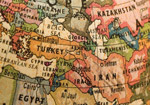
Laying Down the Law
TSA enhances screening measures, expands use of ETD technology
In response to the failed Christmas Day bombing by Umar Farouk Abdulmutallab, the Transportation Security Administration has mandated enhanced screening measures at airports nationwide for U.S.-bound passengers traveling from or through state sponsors of terrorism and other countries of interest.
Abdulmutallab, a Nigerian national, attempted to detonate an explosive device containing PETN and TATP hidden in his underwear while on board Northwest Airlines flight 253, en route from Amsterdam to Detroit. His trip originated in Lagos, Nigeria. Abdulmutallab has pleaded not guilty to charges of attempted use of a weapon of mass destruction; attempted murder within the special aircraft jurisdiction of the United States; willful attempt to destroy and wreck an aircraft within the special aircraft jurisdiction of the United States; willfully placing a destructive device in, upon and in proximity to an aircraft within the special aircraft jurisdiction of the United States; and two counts of possession of a firearm/destructive in furtherance of a crime of violence. If convicted, he faces a life sentence in prison.
The State Department designates four countries as sponsors of terror: Cuba, Sudan, Syria and Iran. These countries have repeatedly provided support for acts of international terrorism. The other countries of interest are Afghanistan, Algeria, Iraq, Lebanon, Libya, Nigeria, Pakistan, Saudi Arabia, Somalia and Yemen.
The long-term, sustainable directive states that every U.S-bound traveler who holds a passport issued by, or is traveling from or through, nations that are state sponsors of terrorism or other countries of interest are required to undergo enhanced screening. The TSA has not offered details on the enhanced security procedures. TSA also is expanding the use of explosive trace detection technology within security checkpoints to randomly screen passengers' hands and carry-on luggage. If travelers refuse the ETD swab, they may be subject to additional screening and referral to a law enforcement officer. A TSA blog stated that TSA officials are aware and sensitive to the fact that many travelers may work around chemicals that may result in a positive ETD result. They are cognizant that an alarm does not automatically infer guilt. They have the experience and procedures in place to ascertain those who pose real threats while clearing innocent travelers.
Tried and True
Airports nationwide rely heavily upon Smiths Detection's IONSCAN 500DT, which received TSA certification in 2006. These devices are employed as explosives detection systems for checked baggage and ETD systems for more visible environments such as security checkpoints. With the expanded use of ETD technology, TSA officers will place IONSCAN 500DTs on handcarts for mobile random screening of passengers at security checkpoints, in checkpoint queues and at boarding areas. Officers may swab carry-on luggage or passengers' hands and use the device to test for trace explosive residue. For sanitary purposes, screening swabs are disposed of after each use.
By incorporating two IMS detectors in a single unit, the IONSCAN 500DT is capable of detecting and identifying more than 40 explosives and narcotics during a single analysis. The detectable explosives substances include RDX, PETN, NG, TNT, HMX and TATP. TSA does not calibrate the ETD machines to test for narcotics.
"Explosive trace detection technology is a critical tool in our ability to stay ahead of evolving threats to aviation security," said TSA acting administrator Gale Rossides. "Expanding the use of this technology at checkpoints and at departure gates greatly enhances security to keep the traveling public safe."
Serious Business
The Department of Homeland Security has awarded $15 million in American Recovery and Reinvestment Act funding for the purchase of 400 fixed ETD machines. President Obama's 2011 budget includes an additional $39 million to purchase 800 portable ETD machines.
Funded in part by the ARRA, Morpho Detection has recently signed a contract with TSA to deliver hundreds of Itemiser® DX ETD machines. The contract value is approximately $16 million.
The TSA-certified Itemiser DX is an ion trap mobility spectrometer that has been added to the TSA Qualified Product List for ETD. It is the first trace detector that simultaneously detects positive and negative ions. The desktop detectors will be deployed at airports nationwide to screen checked baggage, passengers and cargo.
"We are especially pleased to have our next-generation Itemiser DX explosive trace detection system chosen by TSA for use at airport checkpoints across the country," said Dennis Cooke, senior vice president and CEO of Morpho Detection Inc.